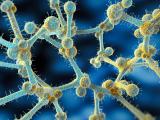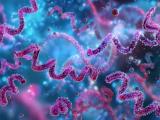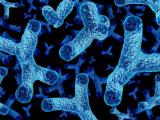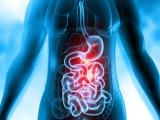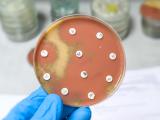Across the country, aging sewage infrastructure and runoff from impervious surfaces are exposing urban rivers and streams to a host of contaminants, from road salt and oil to trace metals and inorganic nutrients. In many cases, however, we can add persistent pharmaceutical pollution to the list.
This isn't news to Emma Rosi, PhD, an aquatic ecologist at the Cary Institute of Ecosystem Studies in Millbrook, New York. She's been involved in several studies on the presence of pharmaceuticals, including antibiotics, in urban waterways.
The question is what kind of impact these drugs are having on the function and the structure of these ecosystems. With the world becoming more urban and the concentrations of these drugs in surface waters likely to rise, it's becoming a more urgent question, especially for those concerned about how antibiotic use affects the environment.
"We don't really know what it means to expose streams to drugs," Rosi said in an interview. "We don't really know what the consequences are."
In a study today in the journal Ecosphere, Rosi and a team of researchers have uncovered the beginnings of an answer. And while the results of the study leave many more questions, the findings indicate that microbes have developed resistance to antibiotics and other drugs commonly found in urban streams.
Drugs more common in urban streams
In the study, Rosi and her colleagues evaluated four streams in and around Baltimore for the presence of six common drugs: caffeine, painkillers (acetaminophen), antihistamines, the antibiotic sulfamethoxazole, amphetamines, and morphine. The streams represented a spectrum of development, from urban to suburban.
Rosi said Baltimore was chosen because the sewage infrastructure in the city is known to leak commonly used drugs into the water system. But the contamination in the city's streams, she noted, is emblematic of urban watersheds around the world.
"Baltimore is not special in this sense," she said. "In many places around the world, we find infrastructure that is decaying, and we find sewage and pharmaceuticals in aquatic ecosystems."
To evaluate the streams for pharmaceutical contamination, the team used passive samplers deployed in the water for 2 weeks. What they found was unsurprising. All six drugs were detected in the four streams, with the more urban streams having the highest concentrations. The concentrations of sulfamethoxazole were higher in the two more urban streams.
At the same time they were collecting samples, the researchers were also measuring how biofilms—the complex communities of bacteria and algae found on rocks and plants in streams—responded to four of these drugs. They did this by placing jars containing a cellulose sponge, which mimicked a leaf, and the target drug in each of the streams for 2 weeks to see how the biofilms would function, and what they would look like, when exposed to the drugs. Instead of sulfamethoxazole, they used ciprofloxacin, another commonly used antibiotic that's frequently found in surface water. Rosi's previous research has shown that bacteria in biofilms react to the drug.
As the researchers expected, the microbial respiration rates—a proxy for microbial function—were relatively unchanged in the urban streams but reduced in the suburban streams, which had less previous exposure to the drugs. This effect was particularly pronounced with ciprofloxacin.
"When there was no ciprofloxacin, a bunch of bacteria grew in the suburban streams," said Rosi. "When we exposed them to ciprofloxacin, fewer microbes were able to grow and respire."
Bacterial growth in the more urban streams, meanwhile, was the same with or without ciprofloxacin. "This suggests that the bacteria in these streams are functionally resistant," Rosi added.
Next, they measured the diversity and composition of the biofilm bacterial communities on the sponges. This was where the results got interesting.
All the drugs, including ciprofloxacin, had an impact on the bacterial composition in the four streams. But, surprisingly, the types of bacteria that grew in response to ciprofloxacin were the same in both the urban and suburban streams. "When we exposed the sponges to ciprofloxacin, it selected for a specific community of bacteria that were able to live on that substrate," Rosi explained. "The bacteria that can handle ciprofloxacin can handle it in the urban streams and the suburban streams."
The difference was that in the urban streams, that community was better able to handle exposure to the antibiotic and maintain the same rate of function. Rosi said this result was "a bit of a head-scratcher," but she and her colleagues theorize that prior exposure to ciprofloxacin in the urban streams—due to the city's leaky sewer pipes—had created sub-populations of ciprofloxacin-resistant bacteria that were able to rapidly colonize the cellulose sponge in the presence of the drug and function normally. In the suburban streams, those bacterial sub-populations may not have been as large.
Impact is unclear
Rosi is quick to point out that no conclusions about potential impacts on human health can be drawn from this study. The focus of their research, she said, is how exposure to pharmaceuticals affects the stability, health, and productivity of urban streams.
While there may be pathogenic bacteria within the larger families of bacteria that grew when exposed to ciprofloxacin, she and her colleagues weren't looking specifically for pathogens.
"It's not surprising that if we put antibiotics into the environment, we might end up with antibiotic-resistant bacteria," she said "There are many types of bacteria in streams that are not pathogenic. Most are not. But from my perspective as an ecosystem ecologist they perform important ecosystem functions."
These functions include cycling nutrients, breaking down nitrogen and carbon, and serving as a food resource for aquatic species. And while this study provides some insight into how exposure to antibiotics and other types of drugs can affect bacteria in urban streams, the ultimate impact on these functions is still unknown.
"It's still an open question what the effects of pharmaceuticals are in aquatic ecosystems," Rosi said.
See also:
Jan 9 Ecosphere study


